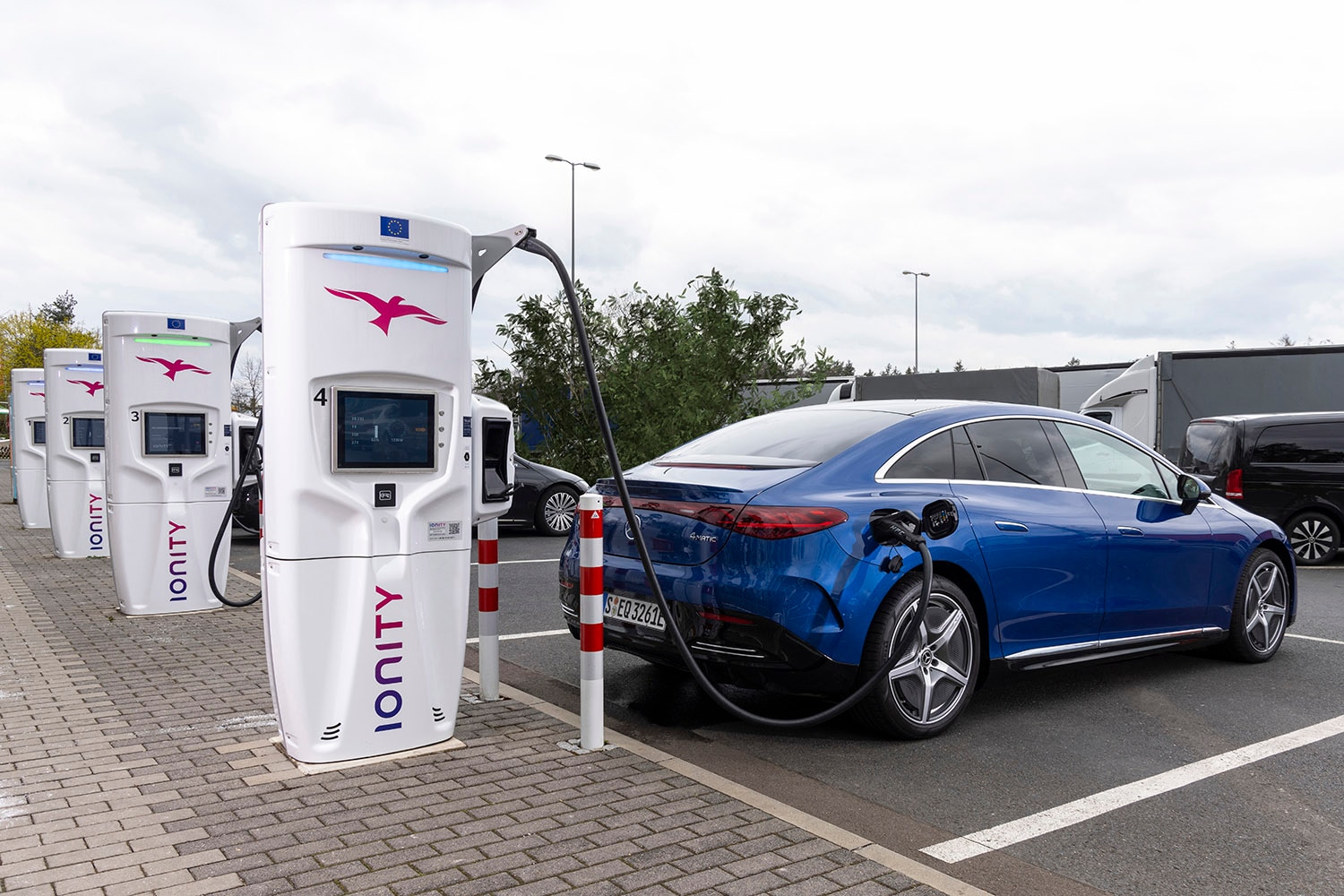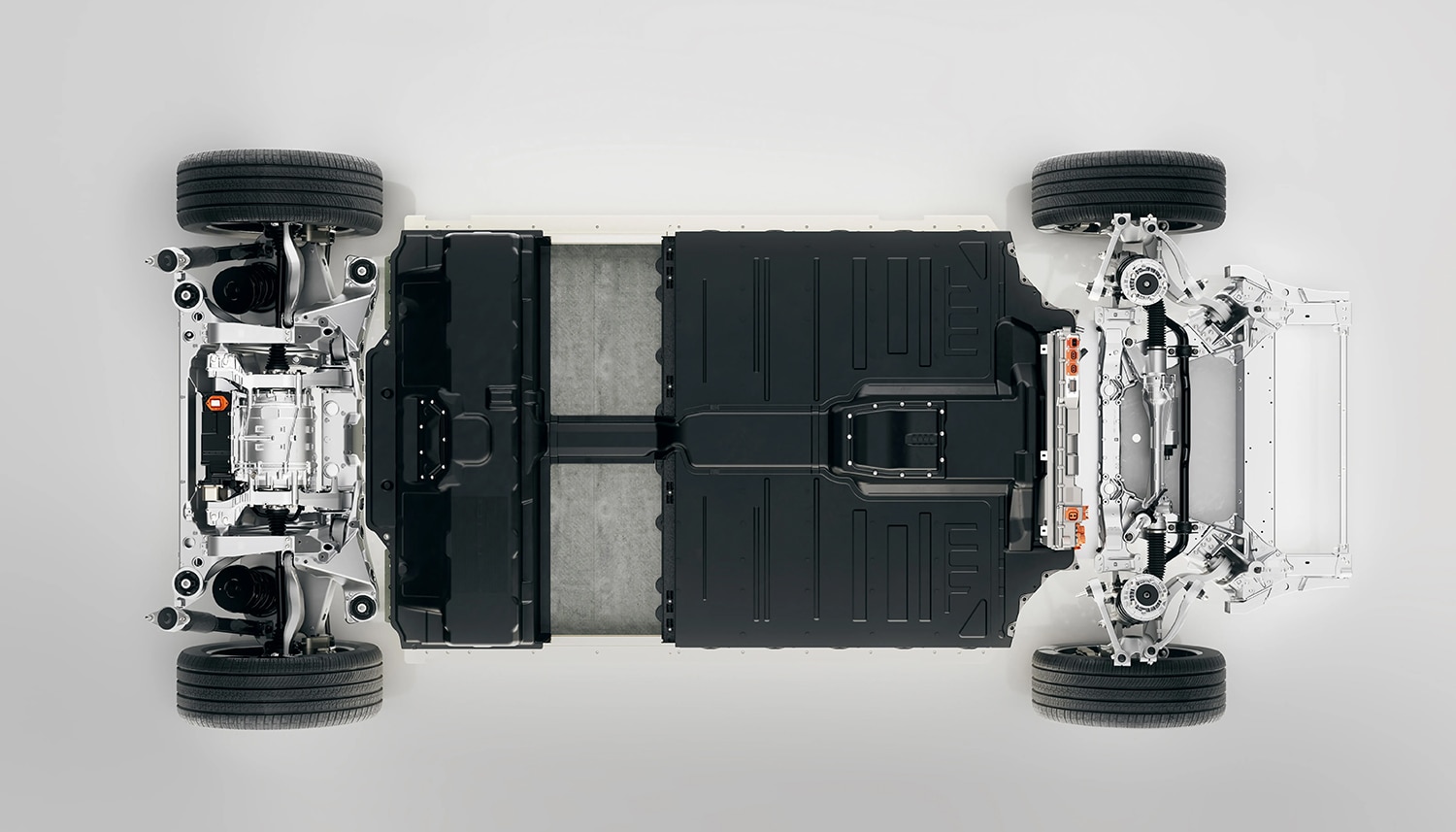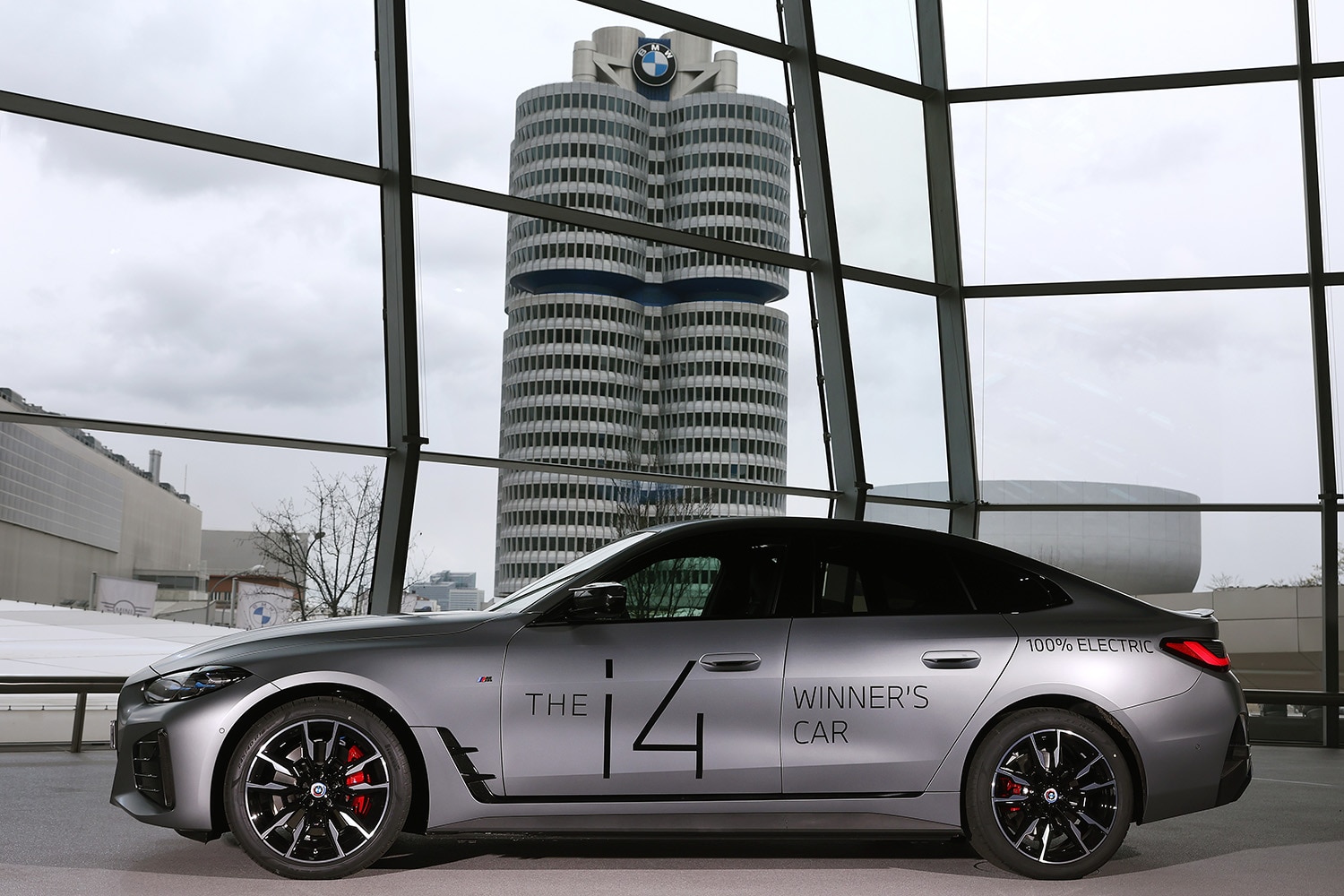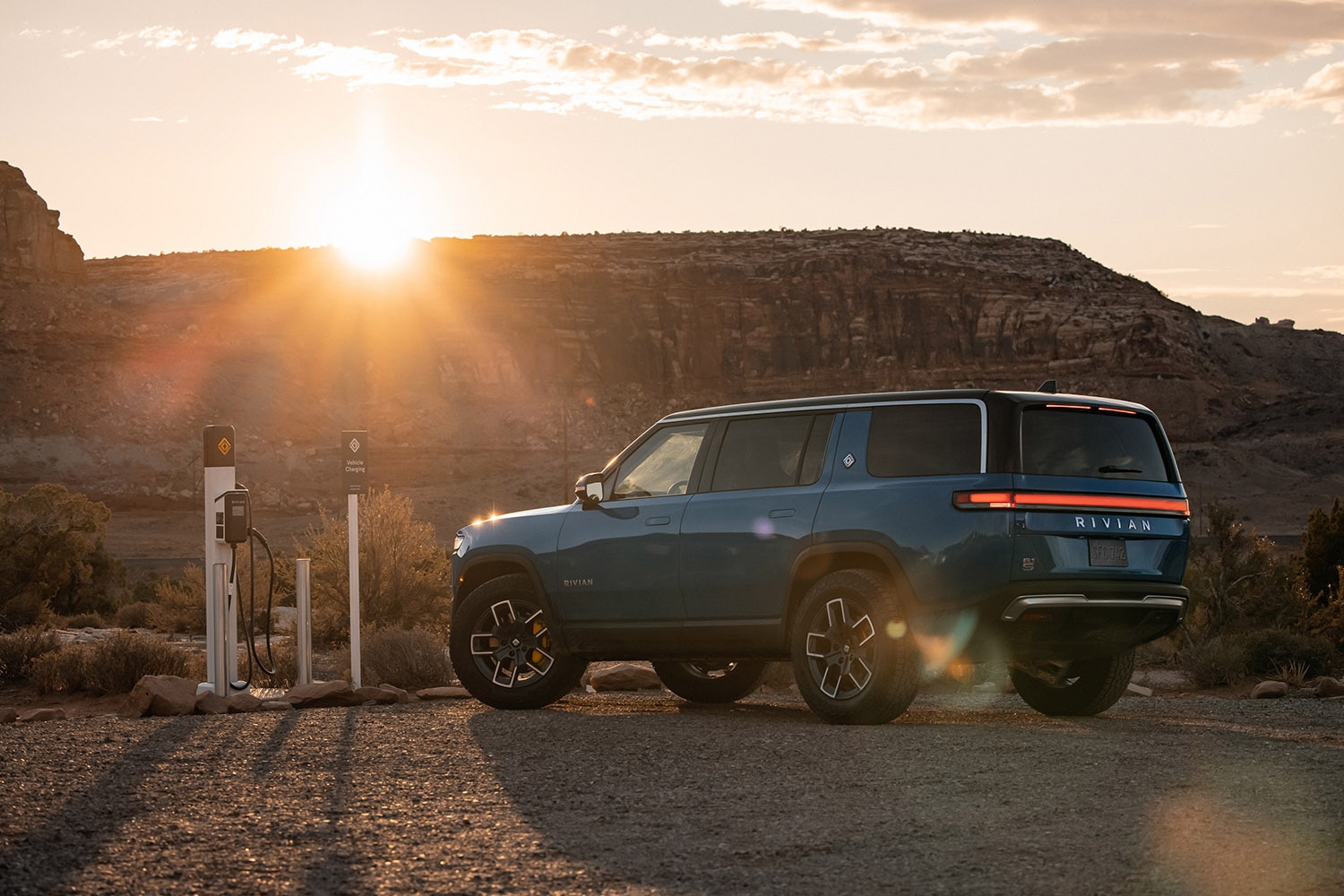What Makes One EV Motor Different From Another?
It's what's on the inside that counts.
 Mercedes-Benz
Mercedes-Benz
Pop the hood of a '70s muscle car and you might be able to determine some specs about the engine just by looking, such as how many cylinders or carburetors it has. You might not even need to pop that hood, as there's likely a badge touting the V8 engine's cubic-inch displacement.
EVs offer no such clues as to how they're powered or the amount of power their motors make. Lucid packs anywhere from 430 to 1,234 horsepower into the same Air body, and its chosen trim level names — such as Pure and Sapphire — don't reveal anything about the powertrain. The electric motors producing those outputs are similarly devoid of aural and visual identifiers, emitting no exhaust note and requiring no tailpipes. While there's no analogue to displacement, the motors found in electric vehicles (including hybrids) can differ from one another in fundamental ways.
 Lucid
Lucid
Unlike an Engine, an E-Motor Has Few Moving Parts
EV motors are usually tucked out of sight, but if you manage to lay eyes on one in an electric car, you'll generally see a semi-tubular metal contraption with orange high-voltage wiring running to it. Were you to crack it open, you'd find a cylindrical object made up of two main parts: a rotor and a stator. The stator is the stationary outer ring in which the rotor — that tube in the middle — spins.
The rotor is integrated with the motor's output shaft, which sends torque to a transmission (usually a one-speed affair) and then on to one wheel or a differential sitting between two wheels. The design of the rotor is what differentiates one motor type from another.
The stator, on the other hand, varies a lot less from motor to motor. It consists of tightly wrapped or closely situated wires, called windings, which form a sort of ring around the rotor. The stator (and its windings) don't actually touch the rotor. Instead, the stator sets the rotor in motion by electromagnetic magic.
It works like this: When the driver hits the accelerator pedal, direct-current power flows from the battery to a DC-to-AC inverter, which then sends alternating-current power to the stator's windings in timed pulses. This creates a rotating magnetic field around the rotor, causing it to do what it's named for: rotate.
This power flow also works in the opposite direction — AC to DC — during regenerative braking to recapture energy and store it in the battery. A mechanical force (such as the inertia of the car's drive wheels as they roll along when no power is applied) turns the rotor, which interacts with the stator, inducing a rotating magnetic field that transfers power to the stator. From there, it's back through the inverter and into the battery.
 BMW
BMW
All Three Types of Electric Motors Rely on Electromagnetic Force
There are three types of EV motors, and they all fall into one of two categories: asynchronous or synchronous. In the asynchronous bucket are induction motors, while the synchronous category includes permanent-magnet and current-excited motors.
Induction motors are not a new technology: They've been around in some form since the 1880s. Within an EV's induction motor, there's a stator sitting on a rotor with its own windings. The rotating magnetic field generated by the stator induces current in the rotor's windings, and that current creates its own magnetic field. The magnetic fields of the rotor and stator oppose each other, causing the rotor to turn. The asynchronous part refers to the fact that, in an induction motor, the rotor rotates slightly slower than the stator's rotating magnetic field.
Induction motors are generally cheaper to produce than the other types, as they don't require rare-earth magnets, which carry financial and environmental costs. They're characterized by good torque production at low speed and efficiency at high speeds.
In a synchronous motor, the rotor turns at the same rate as — in sync with — the stator's rotating magnetic field. As its name suggests, a permanent-magnet electric motor's rotor contains physical magnets that oppose the stator's magnetic field (rather than the induced magnetic field in an induction motor).
Because a permanent-magnet motor does not require any power to induce a magnetic field in the rotor, it is more efficient at low speeds and simpler to control than an induction motor. The downside is that it requires rare-earth magnets.
The other type of synchronous motor, the externally excited or current-excited motor, is more complicated than the others. It works a bit like a permanent-magnet motor, but instead of having embedded magnets, the rotor is connected to and uses DC power to induce a magnetic field that opposes that of the stator's.
Like an induction motor, a current-excited e-motor avoids problematic and expensive rare-earth magnets, and the additional variable of the power supplied to the rotor allows the control electronics to better optimize for efficiency or power. It does take a hit in low-speed efficiency, as the rotor requires battery power to work, and getting power to the rotor is complicated by the fact that it spins in the housing. BMW has adopted current-excited motors in its i4 and iX vehicles.
 Rivian
Rivian
Motor Count and Placement Affects an EV's Capability
The arrangement and number of motors in an EV also make a difference. For instance, some electric cars and trucks have a single motor, either on the front or rear axle, while others have one on each axle. At the more complex end of the spectrum are vehicles with a motor for each of the four wheels, as in Rivian's Quad-Motor Drive setup, which adds torque-vectoring capability to the all-wheel-drive system.
Manufacturers can also mix and match motor types within the same vehicle. Mercedes-Benz, for example, does this with its all-wheel-drive EQ models, employing an induction motor to drive the front wheels and a permanent-magnet motor to drive the rears.
Written by humans.
Edited by humans.
 David Gluckman
David GluckmanDavid Gluckman has over a decade of experience as a writer and editor for print and digital automotive publications. He can parallel park a school bus, has a spreadsheet listing every vehicle he’s ever tested, and once drove a Lincoln Town Car 63 mph in reverse. When David’s not searching for the perfect used car, you can find him sampling the latest gimmicky foodstuffs that America has to offer.
Related articles
View more related articles